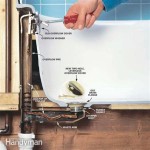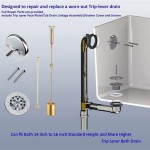Essential Aspects of Bathtub Faucet Valve Replacement
Bathtub faucet valves are crucial components that regulate the flow and temperature of water in your bathroom. Over time, these valves can wear out or malfunction, leading to leaks, drips, and other issues. Replacing a bathtub faucet valve is a DIY-friendly task that can save you time and money compared to hiring a plumber.
Before replacing the valve, it's important to gather the necessary tools and materials. You'll need a screwdriver, adjustable wrench, pliers, a new faucet valve, and Teflon tape. Once you have everything you need, follow these steps:
- Turn off the water supply: Locate the water shut-off valves under the sink or behind the toilet. Turn them clockwise to close the water.
- Remove the handle: Use a screwdriver to unscrew the handle screws and remove the handle.
- Remove the valve caps: Use pliers to gently pry off the valve caps. Be careful not to damage the valve stem.
- Turn off the water valves: Use pliers to turn off the hot and cold water valves clockwise.
- Remove the packing nuts: Use an adjustable wrench to loosen the packing nuts and remove them by hand.
- Replace the valve: Screw the new valve into the faucet body by hand. Use an adjustable wrench to tighten it securely, but avoid overtightening.
- Reinstall the packing nuts: Hand-tighten the packing nuts onto the valve body. Use the adjustable wrench to tighten them further, but leave them slightly loose.
- Tighten the valve caps: Replace the valve caps and hand-tighten them. Use pliers to tighten them securely.
- Install the handle: Reinstall the handle by aligning it with the valve stem and screwing it on. Tighten the handle screws.
- Turn on the water supply: Open the water shut-off valves to restore the water flow.
- Check for leaks: Open the faucet and let the water run to check for any leaks. If there are leaks, tighten the packing nuts or valve caps as needed.
Replacing a bathtub faucet valve is a straightforward and affordable way to resolve common plumbing issues. By following these steps carefully, you can ensure a successful repair that will restore the functionality and aesthetics of your bathroom.

How To Fix A Leaking Bathtub Faucet Diy Family Handyman

How To Fix A Leaking Bathtub Faucet Diy Family Handyman

How To Repair A Delta Tub Shower Valve

Lincoln S Tub And Shower Rebuild Kit For Arrowhead 3 Handle Faucets 111815 The Home Depot

Moen 2 Handle Replacement Cartridge For Roman Tub Faucets 1248 The Home Depot

Fixing Faucets How To Replace A Difficult Tub Faucet Cartridge

Valley Single Handle Shower Replacement Parts
Shower Valve Types 101 How To Choose The Right Vevano

Tub Shower Valves At Com

How To Replace A Shower Valve Like Professional Plumber
Related Posts








